Resources by Eugene V. Gallagher
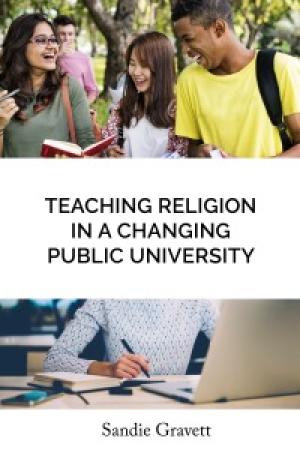
Teaching Religion in a Changing Public University reviews the teaching of religious studies in public universities, with exploration of the challenges and opportunities for the future. Dr. Gravett assesses the current status of the field within the challenges facing universities in general and humanities in particular as we move into the twenty-first century. She notes that: “Revolutionary changes in the higher education landscape call for sustained reflection on impact of these items on the structures in which academic work in religious studies happens and the conditions of faculty life. The advent of new educational technologies, the needs of more diverse student bodies, and alterations in the relationships between universities and communities also raise questions about how religious studies scholars and the programs they provide will evolve.” From this understanding, she provides a succinct and insightful analysis of the types of courses taught in religious studies programs and how these fare (or not) in new modalities impacted by technological change and digital learning. Dr. Gravett’s discussion of the challenges of an increasingly multicultural environment, with its religious pluralism, and the possible roles of religious studies scholars and programs, orient the reader toward present complexities and the potential of religious studies to not only survive but add increasing impact in the future. (From the Publisher)
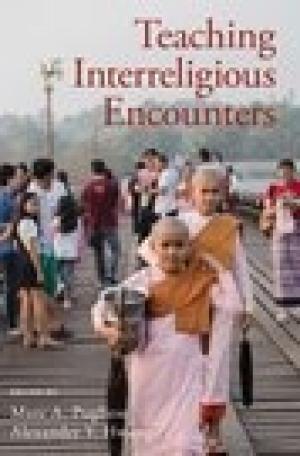
As many of the contributors to Teaching Interreligious Encounters point out, interactions with people of diverse religious commitments are becoming more frequent in the workplace, in civic affairs, and in many neighborhoods. Consequently, there is a need to help individuals develop the attitudes and aptitudes that will enable them to conduct those encounters in an informed, respectful, and personally satisfying fashion. This volume argues that education, particularly in the undergraduate classroom, can make a substantial contribution to preparing individuals to understand and participate effectively in a religiously diverse society. To that end, the contributors offer an array of resources, comments on course and assignment design, and concrete strategies to show students how to conduct themselves in and learn from “interreligious encounters.” Precisely what is entailed in such encounters and how they are to be enacted and understood receive a variety of answers throughout the book. At times, whatever lines might separate interfaith engagement from interreligious encounters, and either from comparative theology, and all of them from comparative religion do not appear in sharp focus. Some authors appear to use at least several of those terms as rough equivalents, while others strive to define their terms very clearly. For example, Eboo Patel and Cassie Meyer propose that “interfaith or interreligious studies is concerned primarily with the interactions between lived religious and nonreligious actors and communities” (300). Thus, they differentiate it from “comparative religions, comparative theology, and world religions” which they see as being less concerned with actual relationships and interactions. But several contributors cite with approval Francis Clooney’s statement that comparative theology “entails the interpretation of the meaning and truth of one’s own faith by means of a critical investigation of other faiths” (see 45), which would bring it closer to Patel and Meyer’s understanding of interfaith and interreligious studies. How to construct courses, course modules, and individual assignments to promote what Patel and Meyer call “interfaith literacy” receives a lot of attention. Joshua Brown, for example, describes and analyzes a course on political theology that uses examples from Christianity and Chinese religions. Jonathan Edelman provides a detailed consideration of the Bhagavad Gita as a theological text. Other authors focus more on pedagogical strategies. In one of the more interesting contributions, Devorah Schoenfeld and Jeanine Diller describe how they use the Jewish process of hevruta to encourage students to disagree with each other in their interpretations of texts while still remaining in conversation, recognize disagreements within and among religions, and value interreligious disagreement. Emily Sigalow and Wendy Cadge make a clear and strong case for the value of using case studies in teaching about interreligious encounters, something that several other contributors also mention. Most of the contributions emphasize that students can learn something personally valuable and meaningful from studying and especially participating in interactions with people who have religious commitments different than their own. This volume offers a rich set of suggestions about how to design and structure such learning opportunities.
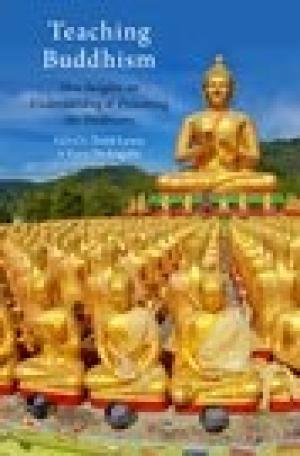
The contributors to this volume of the AAR Teaching Religious Studies series take different approaches to writing about teaching Buddhism. As the subtitle suggests, many of the essays focus on bringing teachers up-to-date on recent developments in scholarship. In their preface, the editors propose that the volume can be used “to revisit some of the key frontiers of knowledge in Buddhist studies, new arenas of study and application, and numerous topics that [instructors] should certainly revise in their presentations to students” (xiv). The volume thus endorses the idea that good teaching depends on familiarity with the best and most current scholarship in the field. There is little interaction with the extensive scholarship of teaching and learning. Throughout the book more emphasis is put on what teachers themselves need to learn than on how they can present that material to students. The contrast is sometimes striking. In the final section on Buddhism in new academic fields, for example, the interesting essay on the history of Buddhist-Christian dialogue only broaches the topic of teaching with a short list of “recommended course books,” without any commentary, after the bibliography of references used in the essay (see 294-5). But the next essay, on teaching Buddhist bioethics, follows a brief adumbration of the field with a detailed analysis of a particular course on that topic, including a clear delineation of learning goals, analysis of a particular case study on abortion that features a detailed scenario that can be used in class, a list of pedagogical considerations for such a course, and a brief annotated bibliography of resources. Readers will need to use this volume in different ways. Although it appears to be aimed primarily at teachers who have already devoted substantial effort to the study of Buddhism, many authors point out intersections with other academic fields, including ethics, environmental studies, economics, politics, gender studies, and philosophy. Three essays address Buddhism and the American context, with Charles Prebish offering a succinct history of the expansion of that sub-field and the concomitant growth of resources appropriate for the classroom. One essay, by Gary DeAngelis, focuses on teaching about Buddhism in the World Religions course, which, despite the persuasive critiques levelled at the concept, is still one of the most widely taught religion courses for undergraduates. Two essays offer distinctive takes on the familiar insider-outsider problem. Jan Willis offers a compelling account of teaching about Buddhism as a Buddhist scholar-practitioner, including sample assignments and her Buddhist rationales for them (155). She also notes the negative perceptions of her standing as a “real” scholar caused by her religious commitments. Rita Gross explores the flip side of that situation, recounting the resistance to her introduction of academic understandings of Buddhist history into her work as a dharma teacher for Buddhist students at a meditation center. Teaching Buddhism offers a rich array of resources for teachers, along with some specific suggestions about how to use those resources effectively in the classroom.
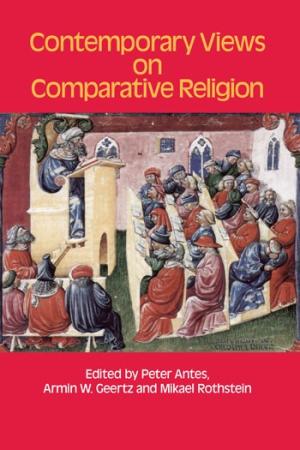
During his time on the editorial board of Teaching Theology and Religion Tim Jensen brought a distinctive, and often provocative, sensibility to that group’s discussions. Rooted in his own experience as a teacher in secondary schools and in universities, and based on his research into systems of “religion education” both in Denmark and throughout Europe, Jensen’s position vigorously argued for a strictly secular (and scientific) study of religions throughout the educational curriculum. Even when they did not carry the day, Jensen’s arguments were always “good to think with.” Although they do not focus as directly on Jensen’s teaching as they do on many of Jensen’s essays (the volume includes a bibliography of his writings), these essays honoring Jensen on the occasion of his sixty-fifth birthday address many of his persistent concerns. As an ensemble, the essays present a vision of the field of the study of religion that will challenge teachers in North America to articulate their own understandings of what the study of religion entails. More importantly for this context, several of the essays link their broad considerations of the study of religion directly to issues concerning teaching. Gustavo Benavides offers an essay that stands out in linking theoretical concerns to the classroom. He argues that whatever the subject matter may have been, at the end of the term students in any course in the study of religion “will have thought, however intermittently, about the various but nevertheless recurrent ways in which what we call ‘religion’ is generated and kept in place” (223). Beyond that broad learning goal he proposes – convincingly in my view – that “Ideally, anyone teaching a course that has to do with any of the aspects of what is generally known as ‘religion’ should be engaged in the elaboration of a theory that could accommodate – however provisionally, however tentatively – most of the topics being discussed in any given class” (225). Benavides shows clearly how conceptions of what is – and should be – involved in the study of religion is not simply the concern of a handful of scholars specializing in “theory and methods.” One’s conception of the nature and purpose of the field has a direct and pervasive impact in the classroom. Several other contributors propose interesting links between their scholarly concerns and their practice as teachers. Russell McCutcheon discusses his use of popular music videos “to illustrate the unexpected appearance of religion” (157) where it is least expected. Drawing on a thorough reading of Jensen’s own work, Wanda Alberts carefully maps out not only what “Religious Studies-based Religion Education” looks like in K-12 curricula but also how it contrasts to other, more confessional, understandings of “Religious Education” and what is at stake in the competing understandings. Satoko Fujiwara provides a persuasive account of why the “world religions” paradigm has persisted in Japanese education, linking it to a particularly Japanese understanding of Max Weber. Though this volume does not focus directly on teaching, it nonetheless provides the interested reader with both some very pointed suggestions about classroom practice and an array of essays about the state of the field that will provoke and perhaps even inspire careful rethinking about what we are teaching when we teach about religion.
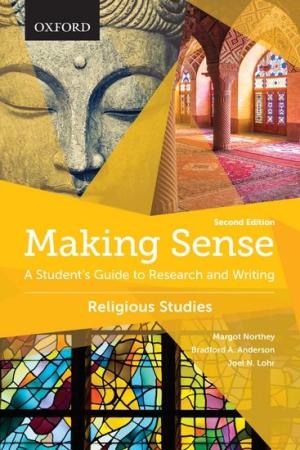
This second edition, like the first, is part of a series of volumes directed towards beginning college students. Margot Northey is the first author of each volume, including the eighth edition of the general Making Sense: A Student’s Guide to Research and Writing, and there is considerable overlap among the different volumes that focus on specific subject areas. Distinctive to this book is a short chapter, “Getting to Know Religious Studies,” and the incorporation of examples from the study of religion into many of the other nineteen chapters. Nonetheless, the focus is primarily on those general processes of thinking and self-expression that are common to many college courses. Because it does not focus narrowly on a specific area of the undergraduate study of religion, this book could easily be recommended, or even required, reading in virtually any course. Some instructors might find some of the advice to be too elementary, but there is helpful material for almost any student, including chapters on “Common Errors in Grammar and Usage,” “Punctuation,” and “Misused Words and Phrases,” as well as a glossary. Since scholarship on religion uses a variety of ways of documenting research, the chapter that outlines the requirements of the Chicago, MLA, and APA systems of reference and charts the differences among them could be especially helpful to beginning students. Throughout the book, the authors urge students to think of themselves as “engaged learners” who aim to make the most of their education by taking careful notes, seeking out their teachers, preparing for writing assignments well in advance, and using feedback on their work to identify both strengths on which they can capitalize and weaknesses that need to be remedied. Consequently, the portrait of the ideal students to whom the book is addressed may strike some as insufficiently tempered by the harsh realities of sporadic attendance, bored indifference, and atrocious time management with which so many teachers in higher education are familiar. Nevertheless, the authors offer concrete advice and some step-by-step procedures that can help any student move towards becoming the type of engaged learner that they envisage and who many would love to have in their classes. The focus of this volume is squarely on writing, with more than half of the chapters devoted to some aspect of the writing process, including writing essays (with a separate chapter on comparative essays), writing book reports and book and article reviews, writing essays for tests, and “Writing with Style.” Complementary chapters address finding and using appropriate sources and documenting them properly. Although the book briefly discusses reading religious texts, teachers who are looking for guidelines about how to introduce students to the kind of careful, patient, analytical reading of texts, objects, films, field observations, and other sources frequently used in the study of religion will need to look elsewhere. Nonetheless, this is a book that could be helpful to many teachers of religious studies.
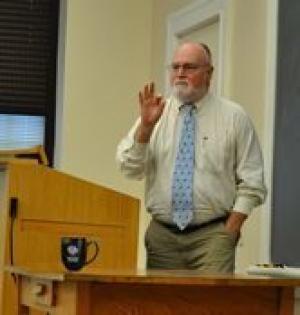
When I started teaching I relied, like many others, on the examples of my own teachers. When I was an undergraduate, the teachers who moved me most were never straight lecturers. So, I tried to adapt their styles. The more...